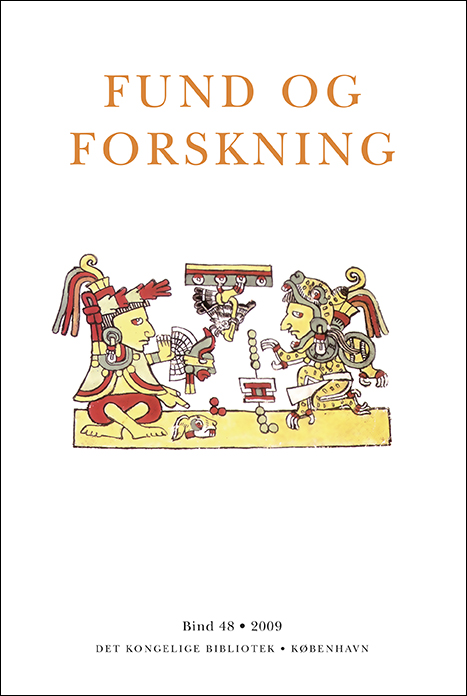Rostgaard, Fabretti og dal Pozzos “Papir Museum”. Nogle aftryk af antikke indskrifter i Det Kongelige Bibliotek og to hovedværker i barokkens internationale lærdomskultur
DOI:
https://doi.org/10.7146/fof.v48i0.41219Resumé
NB: Artiklen er på dansk, kun resuméet er på engelsk. Patrick Kragelund: Rostgaard, Fabretti and the Dal Pozzo “Paper Museum”. The article discusses a series of late seventeenth century squeezes of Greek and Roman inscriptions in the Manuscript Department of the Danish Royal Library. The squeezes are relevant for understanding two of the period’s most ambitious antiquarian and scientific Roman projects, those of Rafaello Fabretti (1619-1700) and the brothers Cassiano (1588-1657) and Carlo Dal Pozzo (1606-89). Both projects were based in Rome of the High Baroque and both focus on the visual, the former as a means of reconstructing the texts of ancient inscriptions, the latter to assemble visual evidence for the renowned Dal Pozzo “Paper Museum” (Musevm Chartacevm) ultimately aimed at illustrating all the categories of objects constituting the visible world. The evidence consisting of 29 sheets was acquired in Rome in 1699 by the Danish scholar Frederik Rostgaard (1671-1745). Summarizing the arguments for rejecting the old idea of Rostgaard having manufactured the squeezes himself, the article briefly outlines the reasons for accepting their intimate links with the grand project of Fabretti, showing how the Rostgaard material in fact offers hitherto discarded new evidence for the reading of ten ancient inscriptions. However, the article’s main focus is on discussing what the material shows about the project of Fabretti and his in many respects innovative methods in using standardised, mechanical means for assembling textual and visual evidence. The second section discusses some hitherto discarded or misapprehended links between the projects of Fabretti and that of the Dal Pozzo brothers. Two Dal Pozzo drawings (ill. 5-6), now in the British Museum, are shown to be copies of an inscription (now in Urbino, CIG 6238 = IGUR 1228) and a squeeze (Rostgaard no. 18 = ill. 7) in what was then Fabretti’s collection; a third and closely related Dal Pozzo drawing (ill. 8), also in the British Museum, copies a further inscription (CIL 6.3424) that was detected and – on the basis of a squeeze – edited by Fabretti; rather than on the original inscription, the said Dal Pozzo drawing may well be based upon Fabretti’s squeeze. In any case, the recovery of these inscriptions is datable to 1684 and 1687, thus incidentally raising questions about the overall validity of the commonly accepted chronology for the ordering of this section of the Dal Pozzo collections. Attempts to date the acquisition of large numbers of drawings to before and after 1682seem contradicted by this new evidence. Thus the three Dal Pozzo drawings discussed above all seem datable, not to before 1682, but to between 1687-89, the latter being the year in which the death of Carlo Dal Pozzo put an end to the great project.Downloads
Publiceret
2014-05-19
Citation/Eksport
Kragelund, P. (2014). Rostgaard, Fabretti og dal Pozzos “Papir Museum”. Nogle aftryk af antikke indskrifter i Det Kongelige Bibliotek og to hovedværker i barokkens internationale lærdomskultur. Fund Og Forskning I Det Kongelige Biblioteks Samlinger, 48, 127. https://doi.org/10.7146/fof.v48i0.41219
Nummer
Sektion
Artikler


